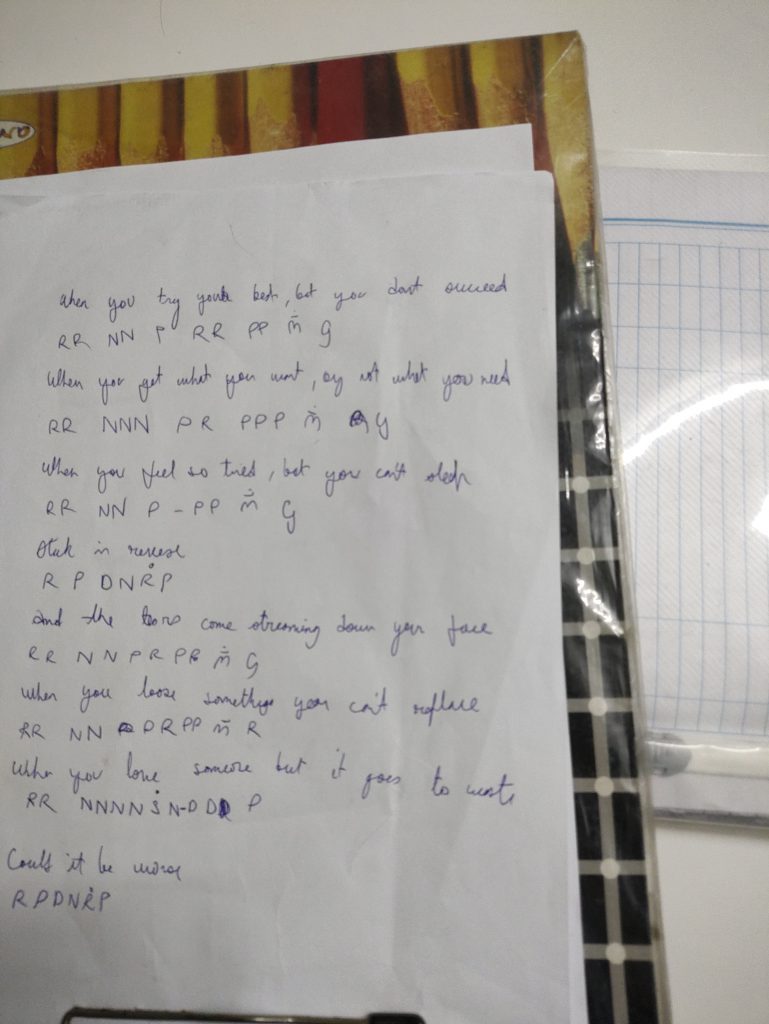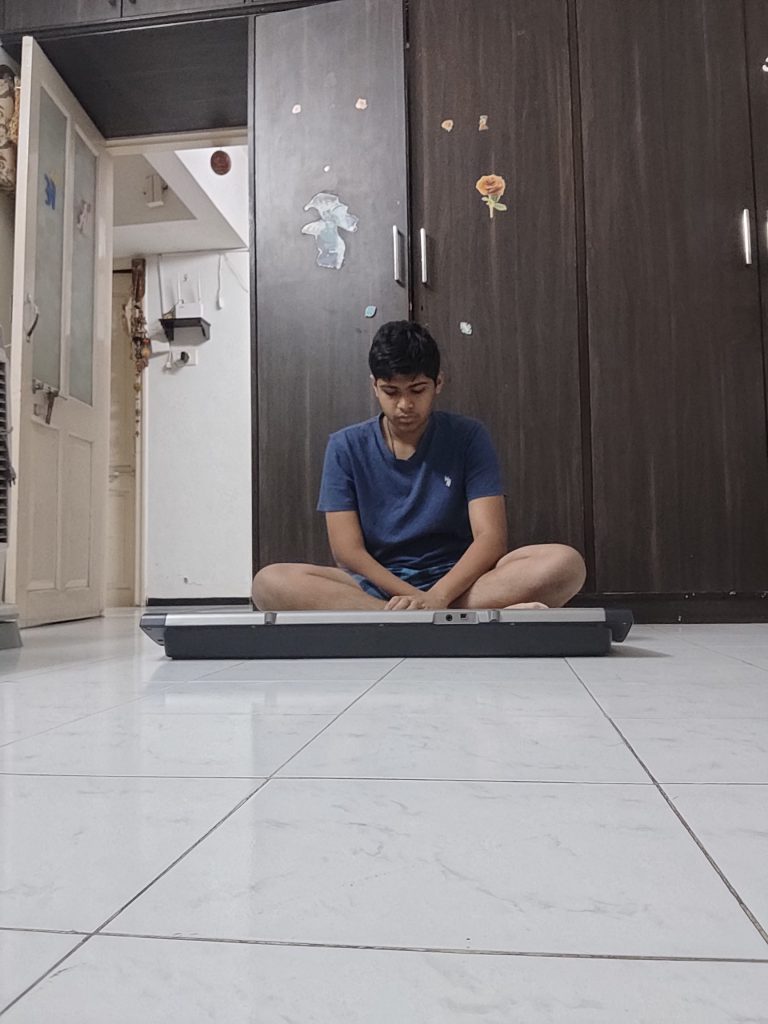I started learning keyboard first in my school in AS, where we used to play from the western style, in which the keys were named as A,B,C,D,E,F,G . Which I then discontinued due to some other options, but my passion for keyboard didnt fell short and I started taking personal classes to which I shifted to the classical version meaning the notations were Sa, Re, Ga, Ma, Pa, Dha, Ni . This transition was pretty difficult to overcome as the basic starting points and notations were very different. I learned keyboard for 3 years and completed year 3 classical exam but as soon as I gave the exam hit , the lockdown hit and I was unable to continue learning and left playing keyboard for more than 2 years.
When we were introduced to the CAS project , I definitely knew I will relearn the keyboard skills and made a plan to master three very versatile songs of different genres, which will help me reflect upon the areas of growth and I only gave me 24 days to master all 3 songs which helped me stay committed towards the task.
The first song I chose was “Fix you by Coldplay” which is a very famous english song. The song is traditionally in the western style notation which I had to convert first to Sargam notations and then play it. The song has a very difficult intrelude and due to some disabilities I can only play with one hand hence making it more challanging .
The second song I chose was “Ajeeb dastan hain yeh” which is a very popular bollywood song from the 90’s , this song had very complicated lyrics and some lyrics are to be played fast while some are played slow which makes it hard to understand and adapt.
The last song I chose was “Raag Bhupali :- Naman kar chatur shri Guru Charan” this is one of the classical songs I learned and admire the most because of how soothing it sounds, also this song uses more than 1 octave and tests your range and how quick your fingers move.
LO 1 :- I am well versed with the Indian sargam system and have attended classes for the same. In the classes I was only taught to play Raag and cultural music, but to see the diversity of Indian music I decided to play 3 songs of completely different genres and style
LO 2 :- As mentioned earlier I was only taught to play cultural music and Raag which has a completely different style than the current Indian and western music, both and require a different skill set to master. Therefore I tried to learn and play songs that are way out of my comfort zone and what i am used to playing.
LO 3 :- I chose a set of songs that are very different from each other and contain less of beat and more of words that sound good when played from a keyboard. In addition I tried to choose songs which have a mix of fast and slow to test my skills even more. I decided to master these songs individually instead of learning all 3 at the same time as the techniques for each of the songs is very different and hence require immense concentration and dedication. I listened to all the songs repeatedly and developed basic notations for the main lines and set a scale on which each song is set and developed the notations for the same and mastered the near imperfections of each songs.
LO 6 :- The classical sargam is a very important part of the indian cultural, which is becoming famous globally but still the classical sargam is getting lost as more and more people try and shift to the western notation instead of using indian notations, the versatility of Indian notation is such even after thousands of years of it being used we haven’t finished the combinations and new pieces are continuously in development. If this classical notation gets extinct the production of Indian classical music will take a hit as well and the rich culture of India won’t remain the same.
EVIDENCE :-


